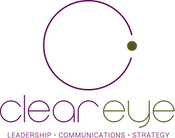Interbrand’s 2013 list of the world’s most valuable brands showed large companies with a greater than average proportion of female board members outperform their peers with all male boards. In fact, the top seven brands have an average of 22.7% female board members, greater than the 19% found on average in FTSE100 companies, although the number one brand, Apple, still still has a way to go. The arrival of Angela Ahrendt from Burberry will take their total number of female board members to two.
A recent study by the consulting firm Caliper, The Qualities that Distinguish Women Leaders, found women leaders to be stronger in interpersonal skills than their male counterparts and “more conducive to today’s diverse workplace, where information is shared freely and collaboration is vital”
However, whilst I will always be a strong advocate of the leadership qualities that women can bring to organisations, what this evidence really speaks to is the need to ensure a diverse workforce across a range of cultural, gender and age biases. A staff team and board will be most effective when it most obviously mirrors the company’s clients and customers.
If we consider that by the year 2075 it is anticipated that there will be no ethnic majority, then companies that put plans in place to adapt to this diversity early will emerge the strongest.
Research into the benefits of a diverse workforce is well documented. Key indicators reflect an improvement in corporate culture, employee morale, staff retention and an increase in creativity. However, in focusing only on the good outcomes of diversity that are internal to an organisation, it seems that most organisations might forget the impact that a diverse workforce can have on its clients and customers.
Diversity can strengthen a company’s relationships with specific customers by making communication more effective. In my own work in charitable fundraising and philanthropy, it is clearly apparent that certain people play to different people at different times. As “people give to people”, it’s important to ensure that we can be responsive in meeting individual preferences.
Diversity is also important to consider in terms of training and development. Being exposed to new ideas, cultures and perspectives can help individuals to reach out intellectually and gain a clearer view of their own place in the world. Undoubtedly, spending time with people just like you isn’t going to lead to optimum development, whatever the capability of individuals or their enthusiasm for learning.
But back to the role of feminine values; if we want to see change and to adapt with resilience to a constantly changing world, we need to challenge what can often be a masculine-led values system. All too often women have to adapt their behaviours and squeeze their natural values into a masculine-led working culture. Successful companies consider both masculine and feminine values.
Feminine values are possibly more related to practical life, ie how things happen and how you can make them happen. Cooperation, interdependence, consensus, motivation, trust and creativity are just some of the often cited feminine qualities. They allow for the building of sustainable networks, establishing trust with customers and good talent management. However, both male and female managers should be aware about when to consciously apply stereotypes. The key is to assess what works best for a specific situation.
What is abundantly clear is that considering and embracing diversity across the board is likely to lead to the greatest long-term sustainability and profit potential.

